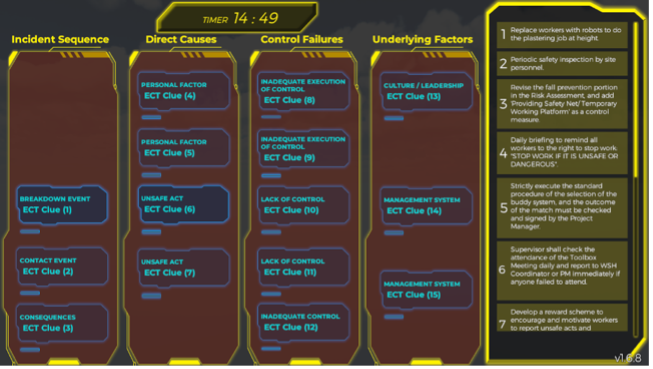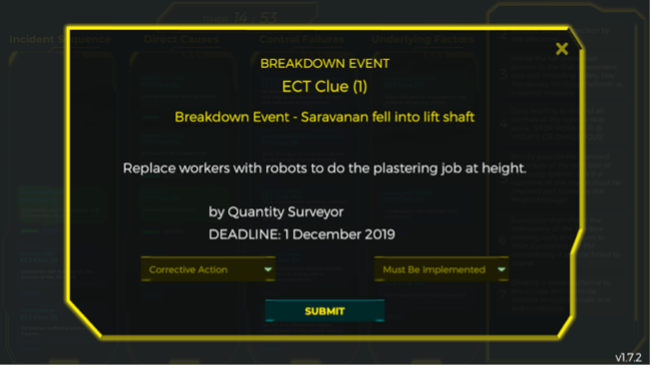SafeSim Investigation
SafeSim Investigation (SSI) is a digital simulation game for incident investigation training where players collect evidence to unlock clues to complete an event causation technique (ECT) and recommend remedial actions.
This study is funded by National University of Singapore (NUS) Learning Innovative Fund – Technology (LIF-T) grant. The contributions of Mr Tan Kay Chen, Mr Timothy Yen, and Mr John Yap are acknowledged and greatly appreciated.
Our learning outcomes
Our approach
Overview of SSI
Multiplayer DSG structured in two phases
Investigation & Recommendation
Players collect multiple types of evidence
Documents, site observations, and NPC interviews to unlock ECT and analyse root causes
Authentic tasks and scenarios
Incorporates realistic site conditions, cinematic briefings, and voice-acted NPCs
SSI is a digital simulation game developed to help students learn how to investigate construction safety incidents in a realistic and engaging way. As undergraduates often lack site experience, this game provides a safe and practical environment for them to apply safety knowledge, analyse evidence, and make decisions like real incident investigators.
The game is based on real-world cases and was created with input from industry experts. It follows the authentic learning framework, allowing students to take on investigator roles, work as a team, and develop critical thinking skills through hands-on gameplay. By combining education, technology, and workplace safety, SafeSim Investigation helps bridge the gap between classroom learning and real-world practice in construction safety.
Key feature #1
Setting the context and introduction to the case
- Team-based gameplay supports up to 3 players per team, and multiple players can play concurrently in separate virtual environments
- In-game chat tool encourages collaboration, planning, and task distribution
- Introduced to the ECT method to guide investigation
- Cinematic introduction to contextualise the task and reinforce immersion
- Game controls are displayed during loading to familiarise players before gameplay begins
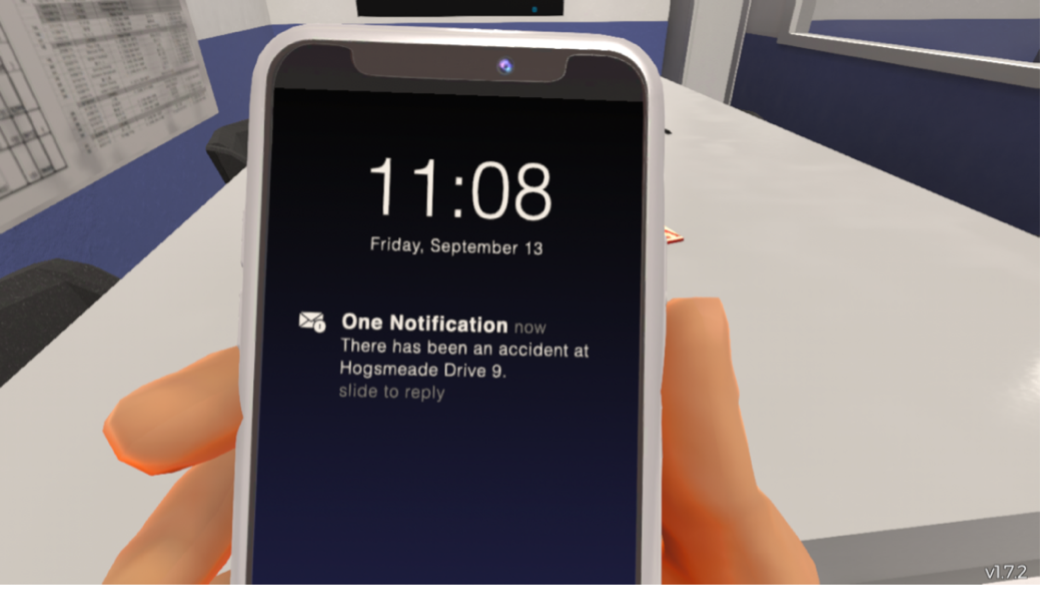
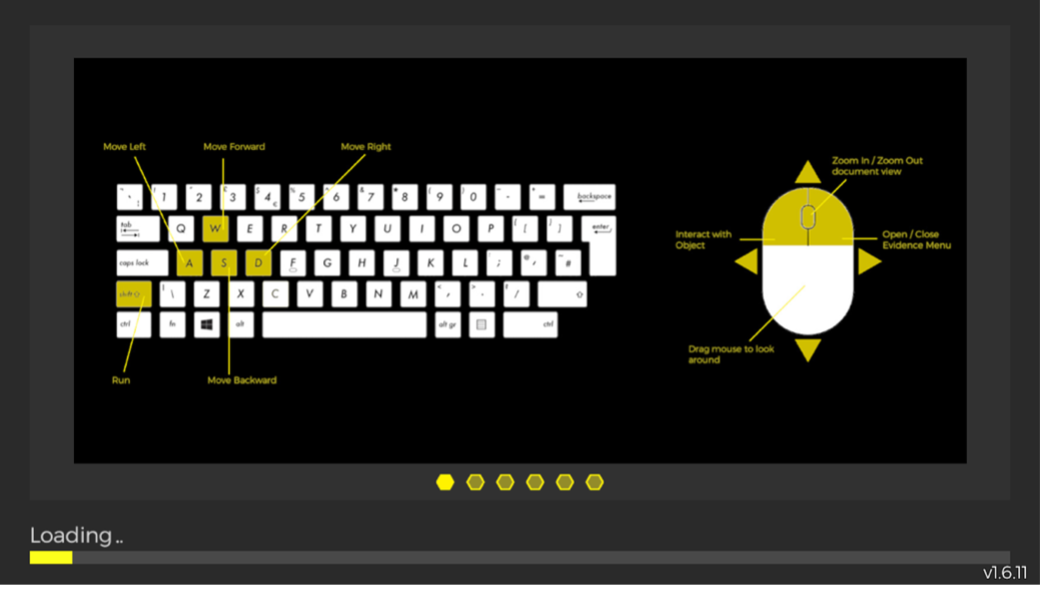
Key feature #2
Phase 1
Collection of different type of evidence
- Applies the 4P framework to categorise evidence
- Part – physical items or equipment from the scene
- Position – spatial or time-based relationships between items/people
- People – interviews with witnesses or involved parties
- Paper – documents such as permits, reports, or logs
- Can collect three types of evidence
- Site evidence – physical objects found on the virtual scene
- Document evidence – digital files like permits, medical reports
- Interview evidence – conversations with NPCs
- Evidence collection is linked to unlocking ECT clues to reveal root causes of incidents
- Players must answer a question tied to each item to earn points
- Immediate feedback is provided to reinforce learning
- NPC interview responses are voiced in authentic languages
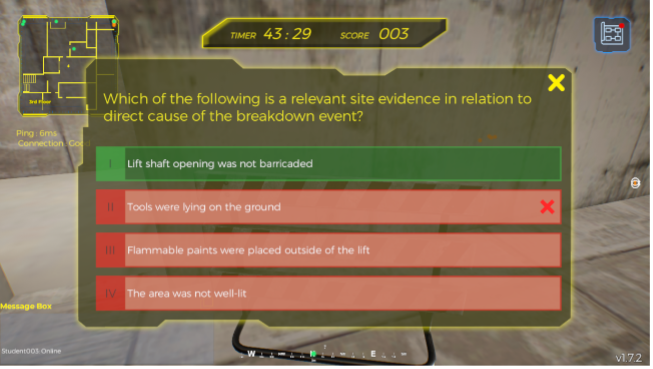
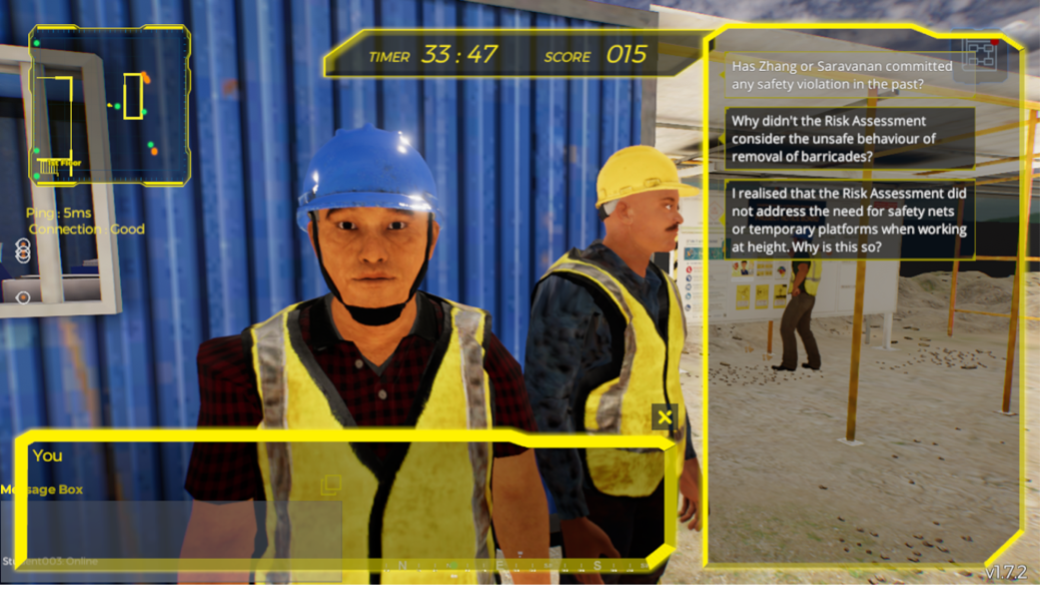
Key feature #3
Phase 1
ECT clues
- Incorporates an ECT diagram as a step-by-step guide for players
- Unlock ECT Clues by completing relevant tasks
- This guidance system aligns with the authentic learning principle of scaffolding
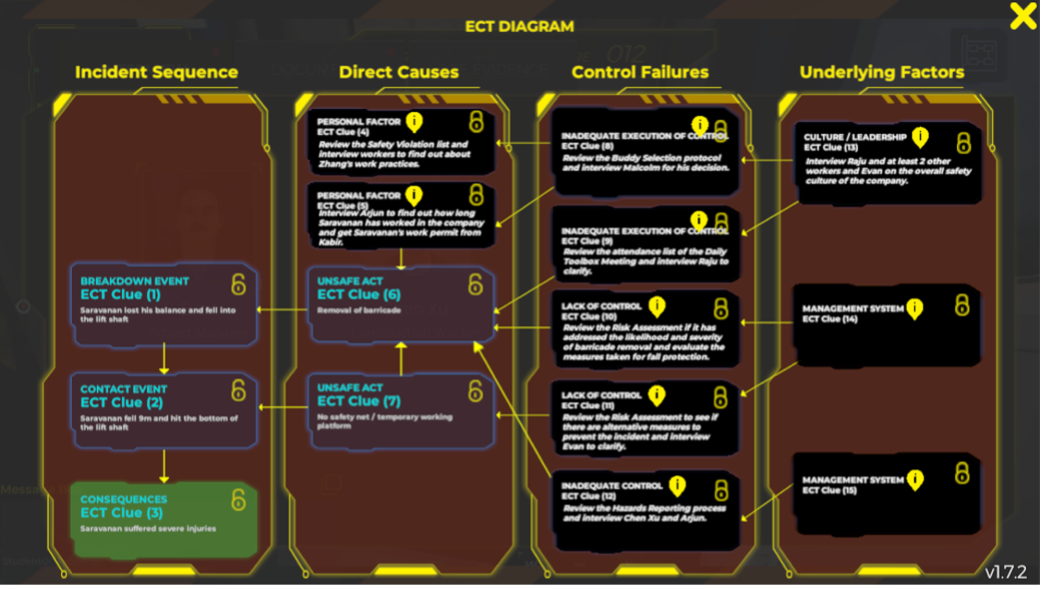
Key feature #4
Phase 2
Recommending actions
- Drag and drop recommended actions to relevant ECT clue cards
- Select action type and importance using dropdown menus
- Submit their answers for scoring based on appropriateness and alignment with the evidence
